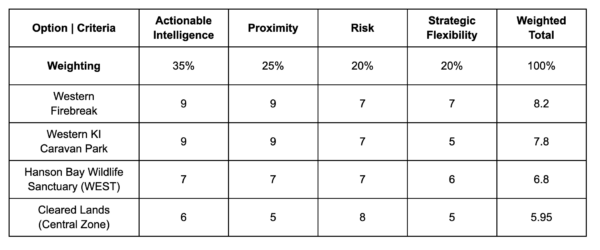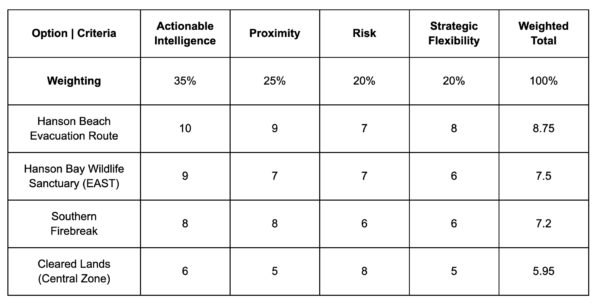Critical Juncture Evaluation
CJ 1: Landing Zones
Civilian Safety (30%): Prioritizing the protection of human lives as the mission’s top priority reflects the immediate humanitarian imperative.
Ecological Protection (20%): Significant weight acknowledges the importance of preserving endangered species and habitats, balancing conservation with other priorities.
Fire Containment (20%): Preventing fire escalation is critical to mission success, as it underpins safety and the protection of resources and ecosystems.
Jumper Safety (15%):Ensuring responder safety is essential to mission continuity but secondary to protecting civilians and managing the fire.
Strategic Flexibility (15%):Valuable for adapting to evolving conditions, ensuring long-term mission success by maintaining operational options.
CJ 2A: Scouting Locations (Sub-Team 1)
Actionable Intelligence (35%): The quality and immediacy of the information obtained regarding fire behavior or other mission-critical factors.
Proximity (25%): The location’s accessibility and its alignment with current team positioning.
Risk (20%): The level of danger posed to the team and mission.
Strategic Flexibility (20%): The location’s potential to serve multiple objectives or adapt to evolving scenarios.
CJ 2B: Scouting Locations (Sub-Team 2)
Actionable Intelligence (35%): The quality and immediacy of the information obtained regarding fire behavior or other mission-critical factors.
Proximity (25%): The location’s accessibility and its alignment with current team positioning.
Risk (20%): The level of danger posed to the team and mission.
Strategic Flexibility (20%): The location’s potential to serve multiple objectives or adapt to evolving scenarios.
CJ 3: Final Strategy Decision
Civilian Safety (30%): Prioritizing the protection of human lives as the mission’s top priority reflects the immediate humanitarian imperative.
Ecological Protection (20%): Significant weight acknowledges the importance of preserving endangered species and habitats, balancing conservation with other priorities.
Fire Containment (20%): Preventing fire escalation is critical to mission success, as it underpins safety and the protection of resources and ecosystems.
Jumper Safety (15%): Ensuring responder safety is essential to mission continuity but secondary to protecting civilians and managing the fire.
Strategic Flexibility (15%): Valuable for adapting to evolving conditions, ensuring long-term mission success by maintaining operational options.
Past Team Performance
Team Scorecard
Confirm your team score below by selecting the options your team chose.
Submit Your Team Scorecard
Acknowledgement
This simulation was inspired by the real-life events of the 2019–2020 Kangaroo Island bushfires. These devastating fires highlighted the critical challenges of balancing civilian safety, ecological preservation, and fire containment under extreme conditions. We honour the resilience and bravery of those who fought the fires and the communities that endured their aftermath.
Once you’ve reviewed the Mission Summary and submitted your Team Scorecard, proceed to the Mission Retrospective under the guidance your Facilitator to unpack your team’s experience.




